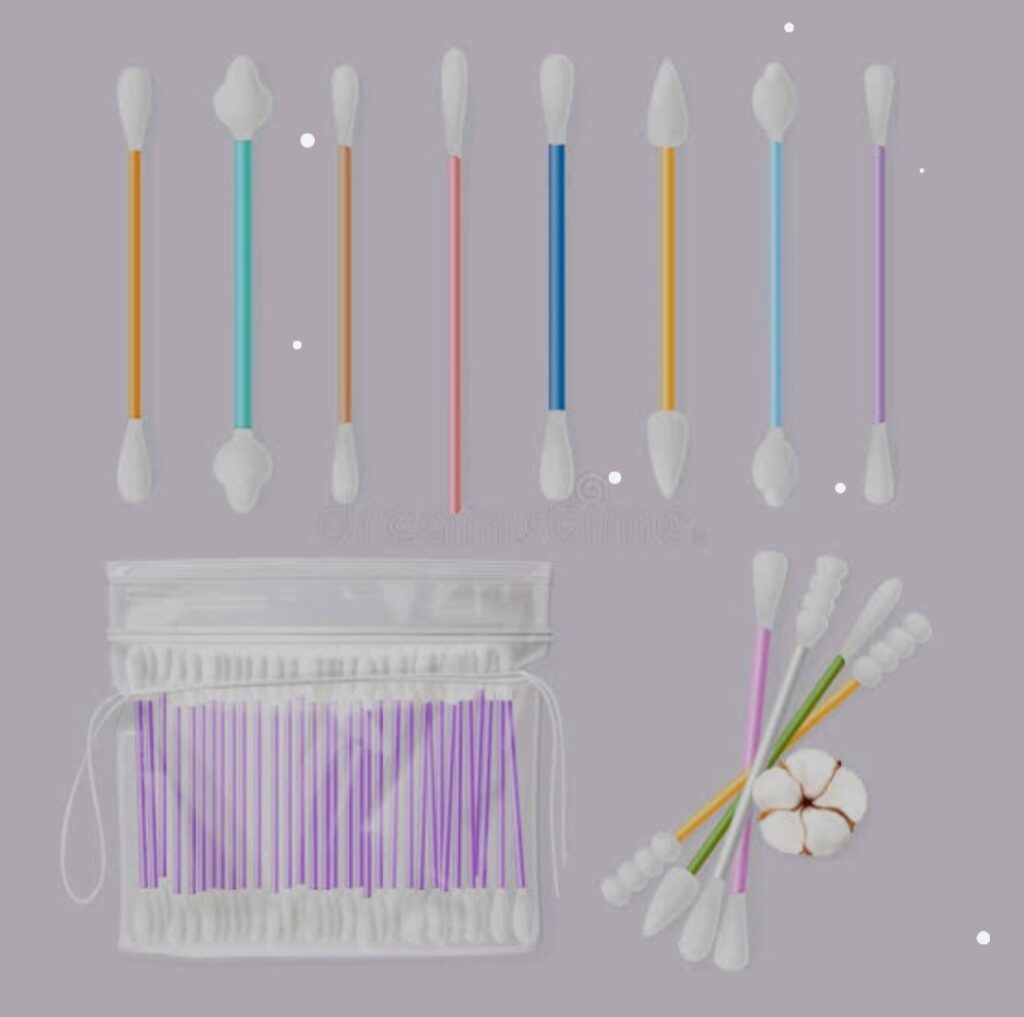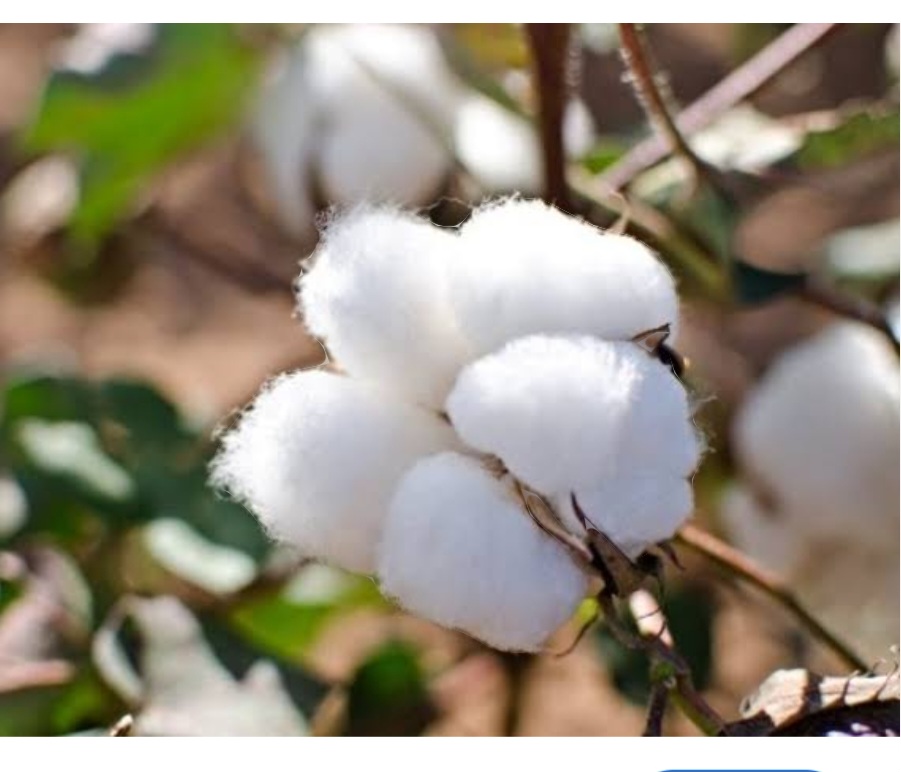
Cotton is a raw materials for the textile industry. It belongs to the family of Malvaceae and genus Gossypium. It is a perennial cash crop.
One of the chief distinguishing features of the genus is that the stamens are united to form a tube around the pistil and the anther are one-celled. Okro, kenaf and jute belong to this family. Industrially, cotton is by far the most important in the family.
There are eight commonly recognized species of cotton.
Gossypium barbadense
G. herbaceum.
G. arboreum
G. hirsutum
G. nanking
G. braziliensis
G. peruvianum
G. purpurascens
Cotton is grown for its lint, which is an industrial raw material. Staple lenght less than or about 2.5cm is considered short, 2.56- 2.73cm is considered medium and 2.81cm and above is considered long.
Cotton is an intermediate plant. The main stem does not terminate in an inflorescence but it is capable of producing a new node every two to four days depending on temperature. Days to first flower ranges between 44 and 97. Flowers are pollinated on the first day and will cross pollinated freely if bees and insects are active. Fibres are unicellular hairs that develop from cells in the epidermis of the seed coat. Short unconvoluted fibres remain attached to the seeds, while long convoluted fibres form the lint.
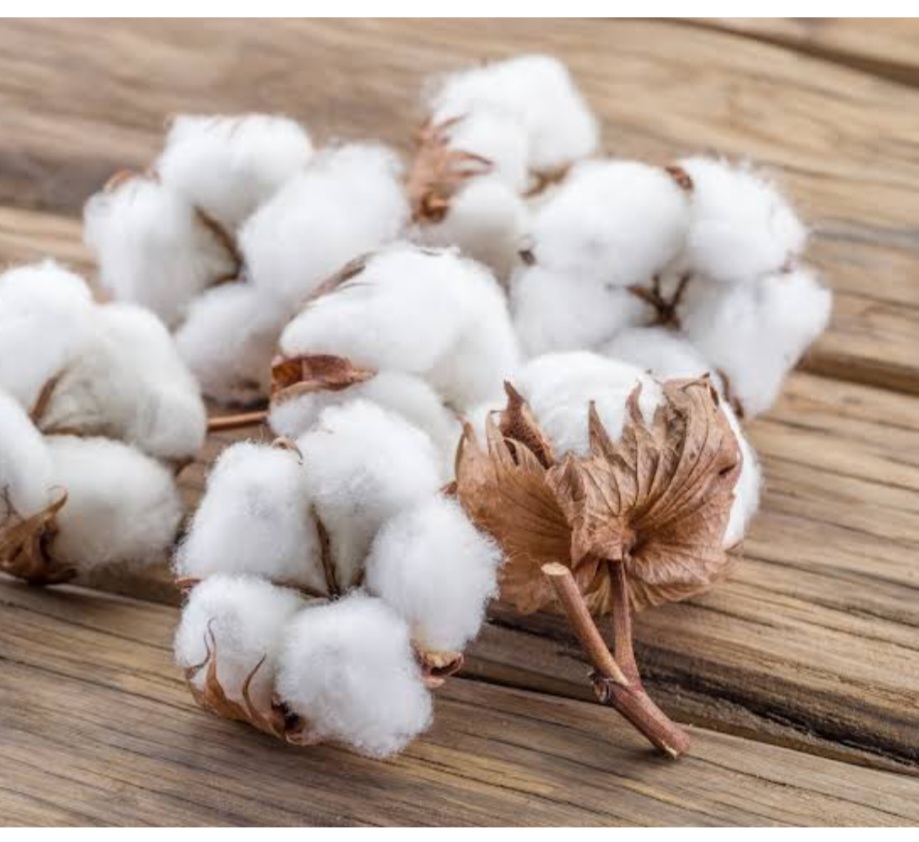
When nitrogen is deficient, morphological development and fruiting rate stop. Nitrogen application increases yield by prolonging production of flower buds so that additional bolls are set at the end of the season.
Cotton fibres are slender, single-cell layers growing out of certain epidermal cells of the cotton seed. The fibres lengthen rapidly and attain full lenght in 20-28 days. If cotton fibre is examined under a magnifying glass, it would be found to be somewhat compressed and irregularly twisted. The amount of twist determines to a large extent, its spinning quality and hence greatly affects its value.
BENEFITS OF COTTON
1. Cotton is the world’s favourite natural fibre. Its beauty, comfort, durability and versatility make it the perfect choice for clothing, bedding, textiles and many other products.
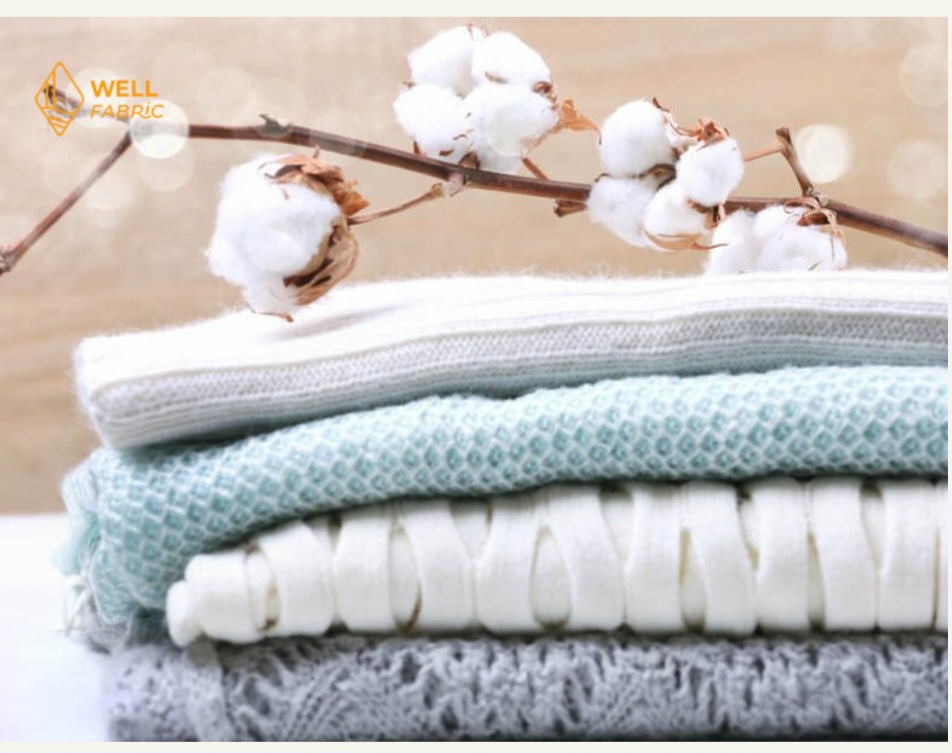
2. Cotton farming provides employment to people. It supports the livelihoods of millions of people – both directly and indirectly – around the world.
3. Cottonseed oil contains unsaturated fatty acids and considered as a healthy oil. It is used for frying, salad dressing and also blending with other oils such as soybean, groundnut and sunflower oil to improve their quality with respect to flavour stability.
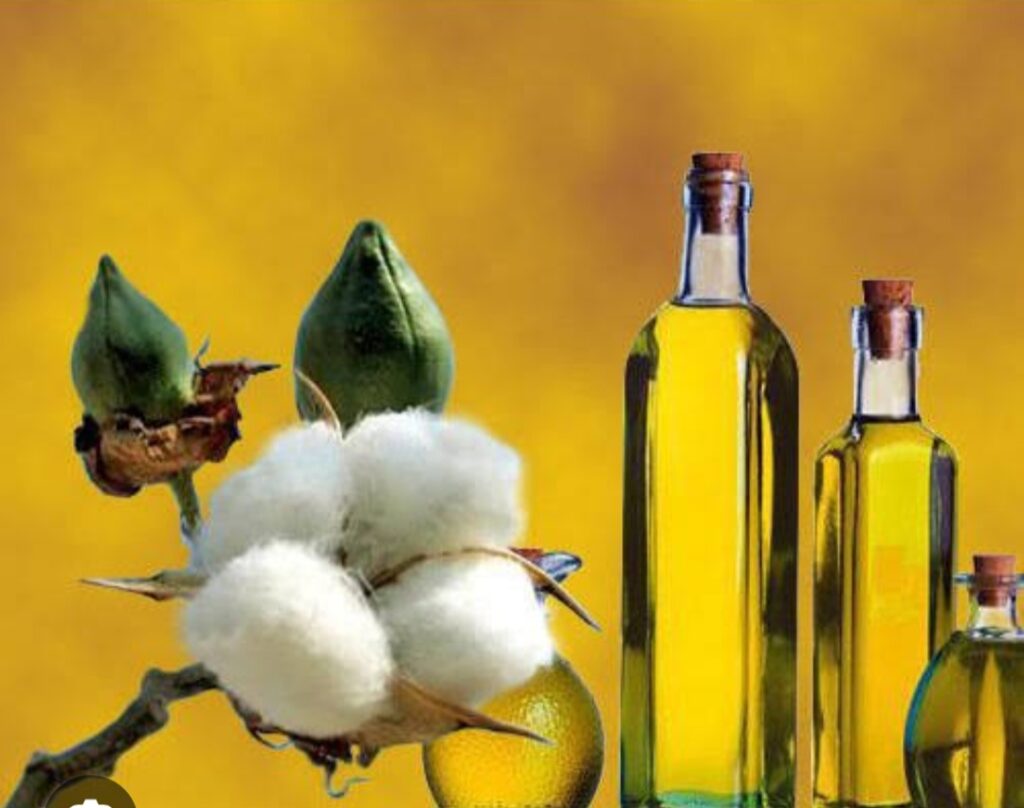
4. Apart from healthy oil, cottonseed also contains a good quantity of protein (20–25%) with some phenolic compounds which impart antioxidant property to protein component. These essential components of cottonseed can be utilised as a source of nutrition in cotton-growing countries.
5. Cottonseed is used for the production of a delicious drink popularly known as Paruthi Paal (Paruthi means cottonseed and Paal means milk). Paruthi Paal is regarded as “triple-nutrient” as it is a very rich source of protein, essential fatty acids and sugars and can be called as an energy drink.
6. Cottonseed has low-glycaemic index and have beneficial effects in preventing PCOS ( Polycystic ovary syndrome). PCOS can lead to other serious health challenges, such as diabetes, cardiovascular problems, depression and increased risk of endometrial cancer. These conditions can be controlled by consuming low-calorie or low-glycaemic index foods such as legumes, seeds like cottonseeds, nuts and fruits.
7. Concoction of cottonseed milk, ginger, cardamom and almonds for making Paruthi Paal is preferred a source for treating cold and cough in Tamil Nadu.
8. The concoction of cottonseed and root of cotton plant do stimulates uterine contraction and help in preventing labour pains.
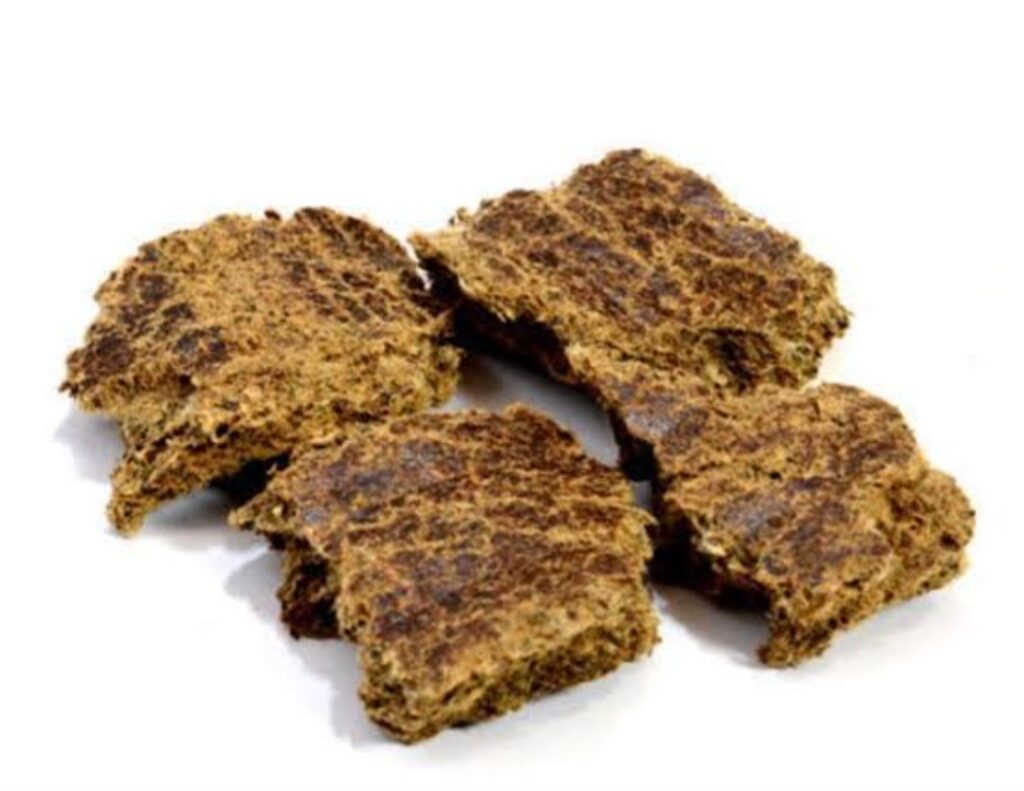
9. cottonseed contain Lipids. This lipid is an excellent source of antioxidants which are known to be very important in maintaining human health and helps in removing reactive oxygen species generated in the body and have anti-ageing effects.
10. Cottonseed consumption has been seen to increase the amount of HDL, also known as the good cholesterol in the body and help in reducing the impact of LDL or the bad cholesterol levels in the human body too. This is due to the fact that cottonseed oils are rich in oleic acid which helps to boost the activity of HDL in the long run.
11. Cottonseed oil is considered one of the great vegetable oils which are safe and help to safe guard the human body from numerous illnesses including cancers. This is due to the fact that cottonseed oil helps in the absorption of vitamin E in the body and which is turn is known to avoid some forms of cancer.
12. Cottonseed contain mono- and polysaturated fats like oleic acid and linoleic acid. This makes it to have an optimistic effect on reducing the chances of blood pressure in humans and regulates the same as well. It is also very important in maintaining heart health.
13. Cottonseed is also a very important source of vitamin antioxidant, i.e. vitamin E. Hence, Paruthi Paal positively helps in the functioning of the nervous system and hence improving the memory functions.
These beneficial effects of the Paruthi Paal are based on the traditional knowledge of residents within places ehere they are produced and also from the internet sources.
CLIMATIC REQUIREMENTS FOR COTTON
Cotton thrive best in warm and humid climatic conditions.
The first requirement for growing cotton is a climate with optimum conditions of temperature, sunshine and moisture that favour a good crop plus a marked dry season, which is essential for the bolls to open properly to facilitate harvesting. The tropical savanna climate in most cases is quite suitable from the point of view of temperature and sunshine.
RAINFALL: Rainfall could be a limiting factor of production. The water requirement of cotton varies considerably according to the stage of development, intensity of sunshine and humidity of the air. Desert might require as much as 40 to 50 inches (1000 to 1500 mm) of water annually. Reduced water needs of 20–30 inches (500–760 mm) are typical in a more moist and temperate areas. In the tropical regions, 2-4mm of water is needed at the beginning and the end of the growth period while at the height of flowering, 5-7mm of water is required daily. Therefore, 500 -700mm of water is sufficient for the crop to develop fully. Climate is a major constraint particularly in regions of short rainy season. The species of cotton are tropical and subtropical in distribution.
Commercial cotton production extends to 47°N – 30°S, the crop cannot be grown successfully above 1,500mm rainfall in tropical Africa.
TEMPERATURE: The optimum temperature for germination is 94°F. Low temperature increases the production of vegetative branches and extends the cropping period. High temperature increases the number of functioning branches and reduces the cropping period.
SUNSHINE: Cotton is a sun loving plant and cannot tolerate shade particularly in the seedling stage. Reduced light intensity due to prolonged overcast weather, shading from interplanted crop or too dense or overcrowded cotton stands retard flowering and fruiting.
SOIL REQUIREMENT: Cotton can be grown on a variety of soils from light sandy soils to heavy alluvial soils. It is generally recommended that sandy loam rich in clay and organic matter and containing normal amounts of nitrogen (N) and phosphorus (P) is the ideal cotton growing soil. Loamy soils high in calcium carbonate typically produce maximum yields.
Cotton requires a minimum soil temperature of 60°F (15°C) to ensure optimal seed germination. Lower yields can occur from crops sown in cooler soils due to higher rates of stand loss and possibly weaker survivors.
At maximum leaf area, the nitrogen content of the leaf is 2.5%. At which stage, the rate of Nitrogen utilization overtakes the supply and internal starvation begins. The number of flower laid down is dependent upon the nitrogen relationship and further growth of the bolls upon carbohydrate supply. Apical growth then ceases, uptake from the soil stops and nitrogen is withdrawn from the vegetative growth parts, particularly the bark. Too much of Nitrogen increased vegetative growth and delays flowering while too little nitrogen causes excessive bolls shedding.
The optimal pH range for growing cotton is between slightly acidic and slightly alkaline (5.8 and 8.0). Decreases in yield tend to be insignificant until the pH falls below 5.5 on sandy loams and 5.2 on silt loams.
LAND PREPARATION: This should be done early and only to a depth necessary to control weeds. Seed beds should be cleaned, fairly fine and firm, especially where the rain is not too heavy.
PLANTING: Growing conditions is of importance in the planting of cotton rather than the calendar. Planting should be done as soon as the rain becomes steady. Cotton is sometimes interplanted with short term crops like groundnut, cowpea etc. In hand planting, cotton is usually sown at a seed rate of 10-15kg/ha at a depth of about 3cm with 3-6 seeds per hole in row or ridges. Ridges are of advantage as they can be tied to conserve water and aid drainage under wet conditions.
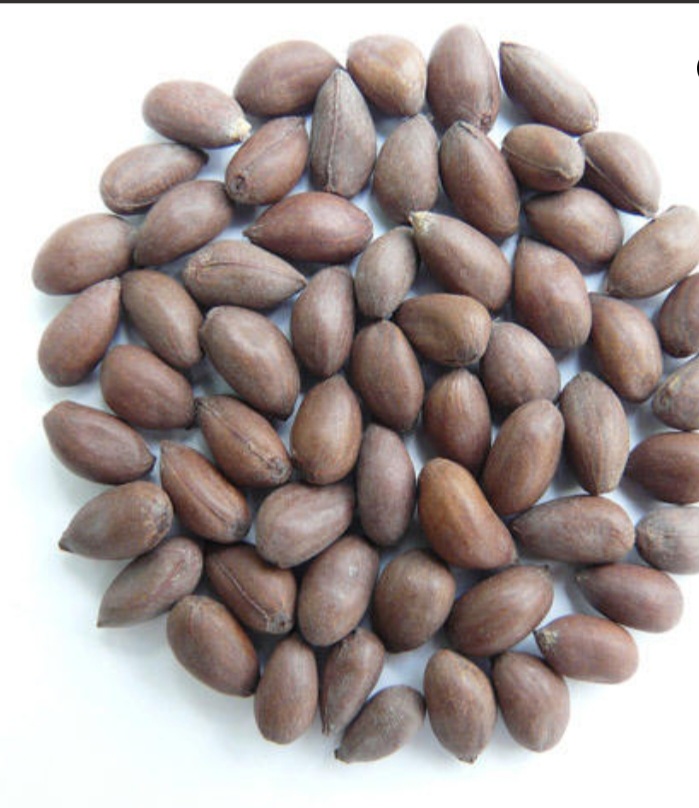
SPACING: The spacing is a function of many variables such as the cultivar being planted, the soil, light intensity, lenght of growing period, and time of planting etc. In some parts with ample and regulated water supply for irrigation, ample sunshine and fertile soil condition, a close spacing with two plant/hill, 30cm intra row, in rows that are 60-65cm apart is planted at a wider spacing of 90cm×30cm with two plants per hill in order to produce well developed individual plants capable of withstanding stress before harvesting.
Traditionally, cotton plant spacing is between 91–102 cm. Some farmers increase the density of their cotton population by engaging in narrow-row growing, which involves sowing the seeds 38 cm apart.
It is important to note that a young plants are usually weak early in the growing season. Therefore, planting cotton too deeply will result in the emerging seedling growing weaker, less likely to form a robust stand, and more vulnerable to damage . The seeds should be sown into damp soil at a depth of not less than 0.5 foot (13 cm).
THINNING: When plants are about 15-25cm high, they are thinned to one plant per hill. In mechanical planting, rows are usually 100cm apart with the plants thinned to two plants per hill which is 20-45cm.
IRRIGATION:
Cotton need more water in hotter and drier growing conditions.
Cotton seedlings require steady amount of water at the early stages. At this stage, the seedlings looses moisture through evaporation, while at later stage, the active plant looses moisture through transpiration. The plant uptake most water in the middle of the growing season, when its canopy is fully expanded and a boll load reaches its peak.
FERTILIZER REQUIREMENT: In the tropics, much of the cotton are grown without the application of manure. However, responses are more commonly obtained from nitrogen than from any other nutrient. The usual recommendation is 125-250kg/ha of sulphate of ammonia with half applied at planting and half at thinning or done before flowering.
On acid soils, nitrogen chalk should be used. Nitrogen is needed for yield, but too much nitrogen leads to excessive growth and delayed maturity. Nitrogen deficiency produces chlorosis, meager growth and increased boll shedding. Phosphate deficiency causes dark green leaves and delays flowering and fruiting.
Potash uptake is higher than nitrogen uptake during the vital boll fill period. Low Potash will delay maturity of cotton, which leads to quality issues. Responses to potash are not common in the tropics but it’s deficiency causes mottled, yellowish leaves with brown spots, the margin of which dries out and curls inwards after which they dry out and are shed prematurely. Placement of fertilizers at planting is better than broadcasting and they are best placed in bands 5cm wide, 6cm from row and 5cm below the seed level.
WEED CONTROL:
Cotton plant seedlings grow slowly, and they can be easy prey to weeds in the early season. Weeds can shade and suffocate the seedling, causing low productivity. In contrast, cotton leaves shade the ground in the later growing season, inhibiting the growth of weed. This is why the first two months after planting are a priority for weed control.
Weeds are natural vegetation occupying cultivated soil and growing from fragments of stocks, rhizomes, bulbs, cuttings or seeds. They compete with cotton for sunlight, water, nutrients and space. Weeds should ordinarily be removed from the soil as necessary and selective herbicides can also be used. However, some stubborn weeds like comelina spp, Acanthospernum hispidum, Ipomoea spp, resist most pre emergence herbicides application. Weeds also decrease the effect of insecticides and defoliant application. Cultivation is a principal means of control and may continue until the plants become large enough to be injured by cultivator.
TOPPING: This is a practice of cutting off the terminal buds of the main stalk to prevent further growth . Cotton is topped to prevent its tendency to lodge, which often occur when long varieties are used. lodged cotton is difficult to defoliate or harvest. Topping can be done by hand or machine. Only the terminal buds of the main stalk is removed by hand topping but all the lateral branches above the height of the topped blade is removed in machine topping.
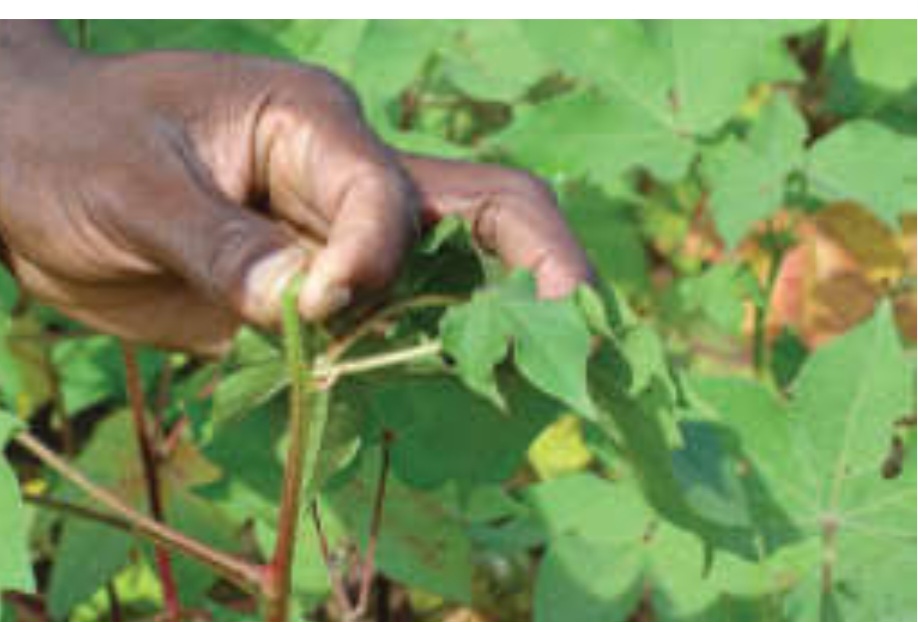
DEFOLIATION AND HARVESTING: Cotton can be defoliated when the bolls are mature to facilitate harvesting. The bolls are ready for harvesting when its open. Alternatively, the farmer could wait until the whole plant is dry enough. Picking should be done regularly so that open boll is not left on the field, a condition which might result in the deterioration in the colour and quality of the lint. The lint should be picked clean, and free from pieces of leaves, bolls and twigs. It is then sorted out into clean and stained cotton before marketing. Most of the world cotton is picked by hand. Harvesting begins 6 months after planting and 3-4 pickings are usually done.
The bolls can also be removed from the stalk using machines known as pickers. Strippers can also be used.
Average yield of lint per hectare varies considerably between countries, ranging from 900-2500kg/ha. Irrigated cotton produces the highest yield of about 3 ton/ha. While the lint yield of rained cotton is about 120 -250kg/ha. The lint quality is classified according to lenght of the staple, maturity, fineness, fibre strength, yarn strength, uniformity of lint etc.
DISEASES AND PESTS OF COTTON
DISEASES
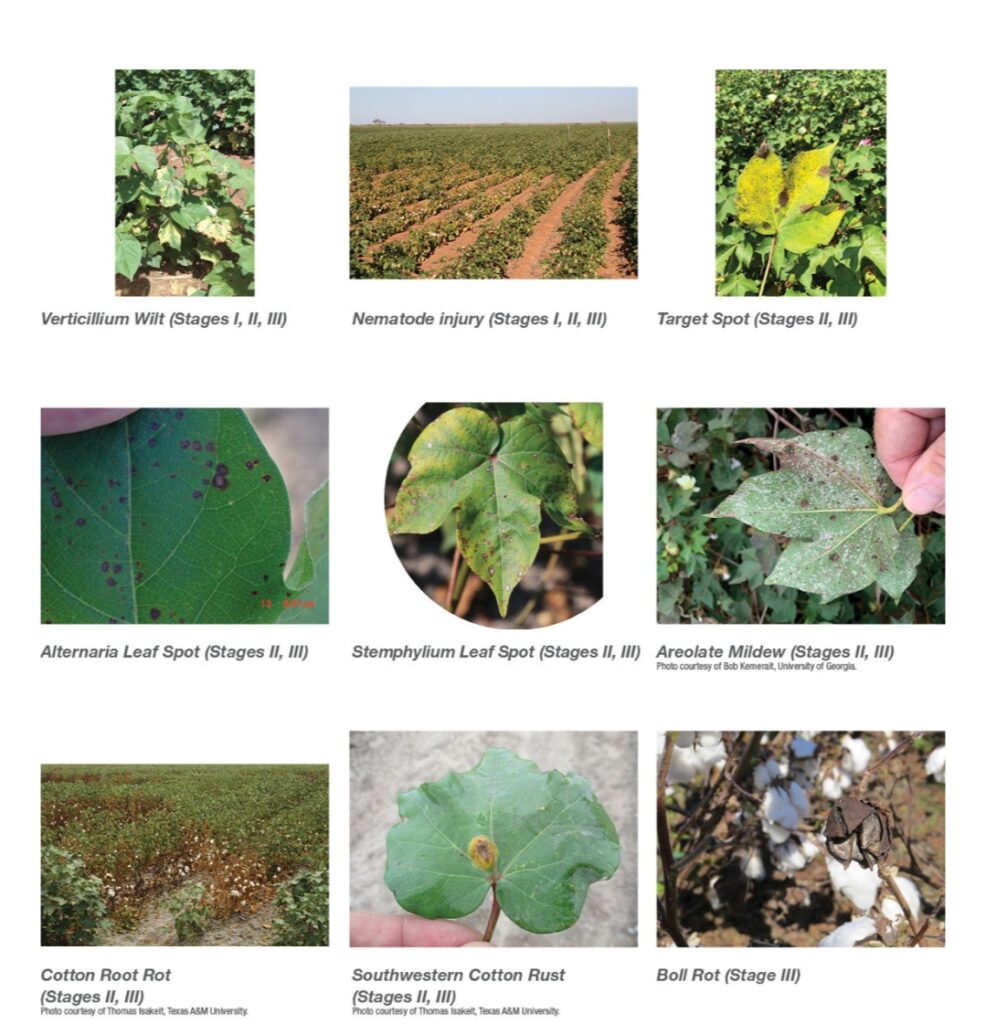
1. BACTERIAL BLIGHT: Bacterial blight is caused by Xanthomonas Malvacearum . It produces water soaked lesions on the cotyledon, leaves and bolls. Those on the leaves later appear as angular, discolored, or dense spots banded on the veins. Those on the bolls later produce black lesions, which causes shedding of the young bolls, distruction of more bolls, infection of the leaf petioles and the stalk, premature opening of the bolls and kill the branch terminals. Losses up to 50% may occur. It is carried by seeds and debris but not by soil.
2. FUSARIUM WILT: It is caused by Fusarium oxysporium. It is soil borne and causes death and stunting of the plant with a yellowish or wilting of the leaves and discolouration of the woody portion of the stem. It first appears as a brownish ring on the cambium.
3. VERTICILIUM WILT: This is caused by Verticilium alboatrum and V. dahliea. It is soil borne. It can cause stunting , chlorosis, wilting of the leaves and shedding of leaves and bolls.
4. LEAF CURL: It is a viral disease transmitted by white fly (Bemeseia tabaci). All parts of the plant are distorted. Cells become twisted and spindly, te leaves curl and crinkle. Veins thickened and the laminar has chlorotic spots and streaks. This can be taken care of by sanitation and planting of resistant varieties.
Other diseases of cotton include: serious crop diseases are Anthracnose, Alternaria leaf spot and root and boll rot.
PESTS
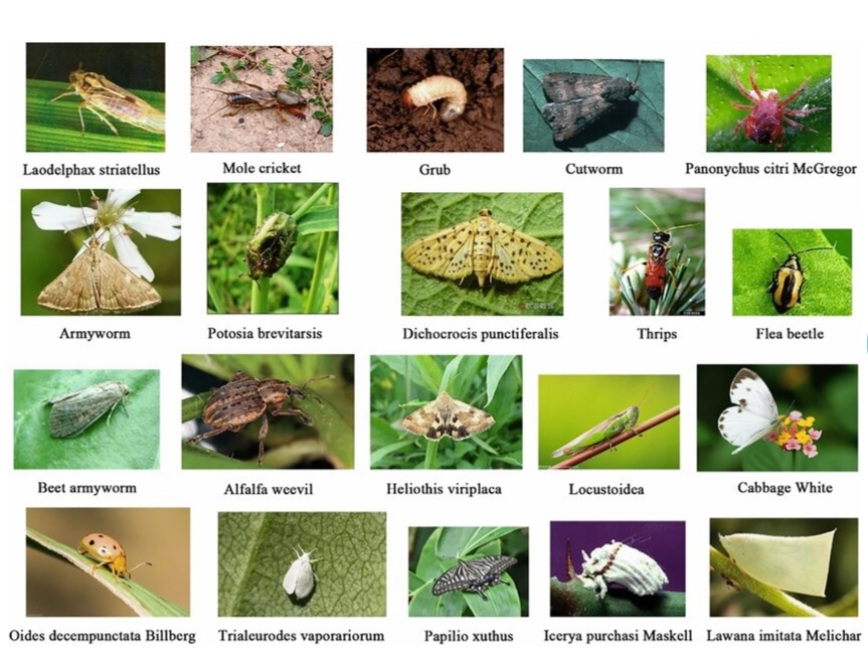
BOLL WORM: These are larvae of various moths. They feed on the bolls, damage lint and seeds, and cause considerable reduction of yield and quality. The main species involved in this damage is the pink boll worm ( Platyedra gossipiella).
It is very common in Asia, Africa and America. Another is the spiny boll worm ( Earias biplagia and Earias insulana). Also, red boll worm ( Diparopsis castanai), cotton boll worm or corn ear worm ( Heliothis zea and Heliothis arnugera). Also included are boll worms ( Anthonomus grandis) . It attacks young leaves, bolls and terminal buds.
SUCKING BUGS: They attack leaves, stem and buds. They cause considerable damage t o cotton. They include: Emposca devastaina, E. Lyrica, E. facial facialis, and Apis gossypii.
COTTON STAINER: Cotton stainer ( Dysderus spp) are found in all cotton growing countries. They feed on the seeds and they are vectors of the fungi Nemetospora species, which causes
internal boll to rot.
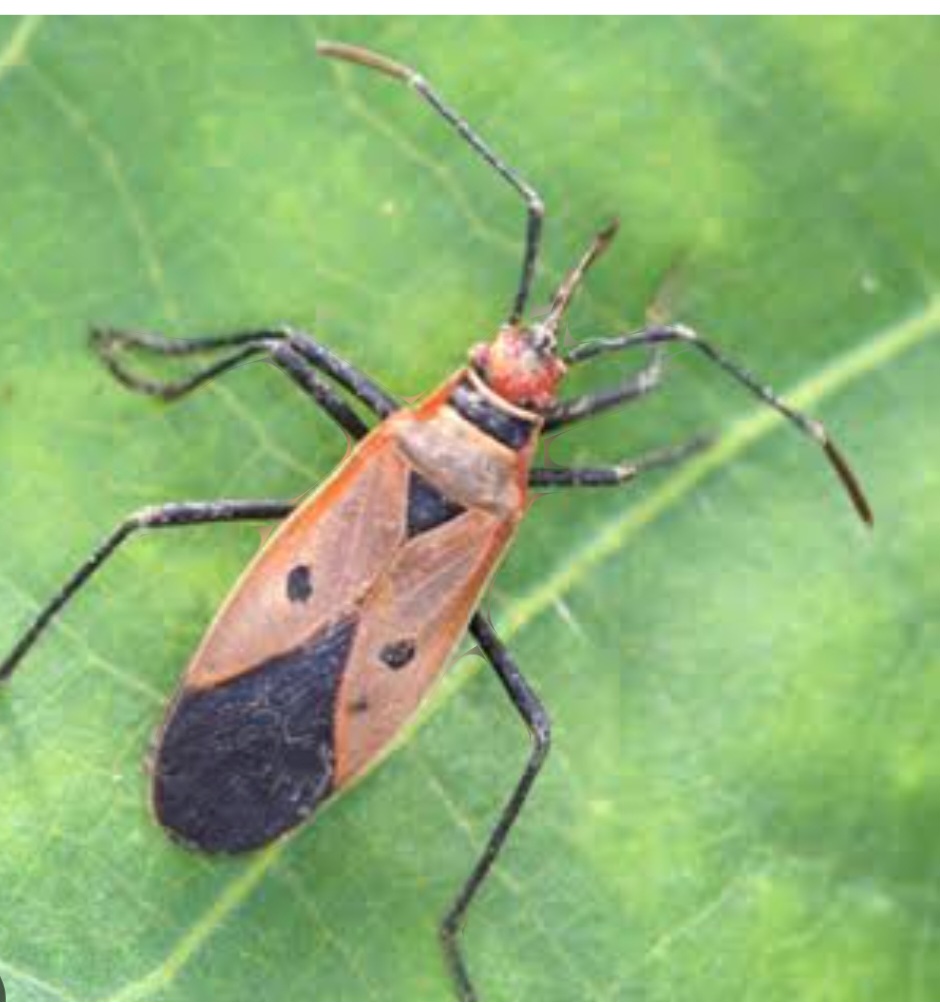
Other pests of cotton include: grasshoppers, cutworms, thrips, aphids, jassids,
spider mites, plant bugs, European corn borers, fall armyworms, tobacco budworms, whiteflies, cabbage loopers, stink bugs.
